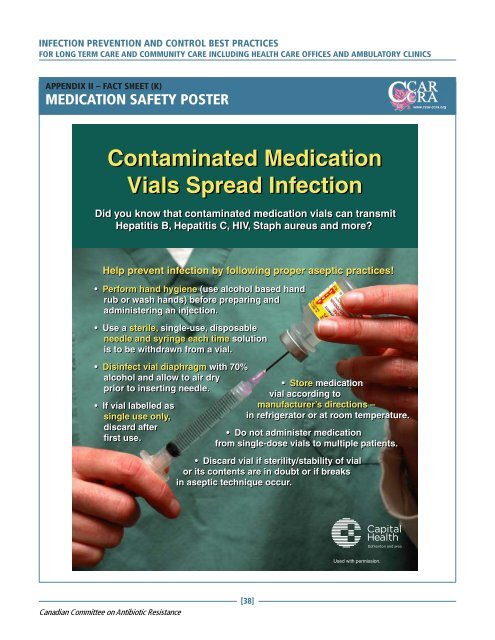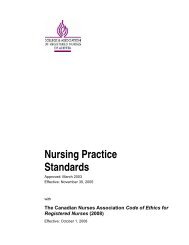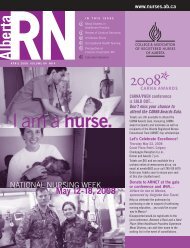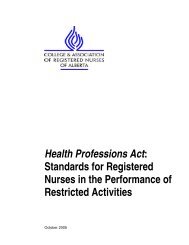Infection Prevention and Control Best Practices - College ...
Infection Prevention and Control Best Practices - College ...
Infection Prevention and Control Best Practices - College ...
Create successful ePaper yourself
Turn your PDF publications into a flip-book with our unique Google optimized e-Paper software.
INFECTION PREVENTION AND CONTROL BEST PRACTICES<br />
FOR LONG TERM CARE AND COMMUNITY CARE INCLUDING HEALTH CARE OFFICES AND AMBULATORY CLINICS<br />
APPENDIX II – FACT SHEET (K)<br />
MEDICATION SAFETY POSTER<br />
Contaminated Medication<br />
Vials Spread <strong>Infection</strong><br />
Did you know that contaminated medication vials can transmit<br />
Hepatitis B, Hepatitis C, HIV, Staph aureus <strong>and</strong> more?<br />
Help prevent infection by following proper aseptic practices!<br />
• Perform h<strong>and</strong> hygiene (use alcohol based h<strong>and</strong><br />
rub or wash h<strong>and</strong>s) before preparing <strong>and</strong><br />
administering an injection.<br />
• Use a sterile, single-use, disposable<br />
needle <strong>and</strong> syringe each time solution<br />
is to be withdrawn from a vial.<br />
• Disinfect vial diaphragm with 70%<br />
alcohol <strong>and</strong> allow to air dry<br />
prior to inserting needle.<br />
• Store medication<br />
vial according to<br />
• If vial labelled as<br />
single use only,<br />
manufacturer’s directions –<br />
in refrigerator or at room temperature.<br />
discard after<br />
first use.<br />
• Do not administer medication<br />
from single-dose vials to multiple patients.<br />
Canadian Committee on Antibiotic Resistance<br />
• Discard vial if sterility/stability of vial<br />
or its contents are in doubt or if breaks<br />
in aseptic technique occur.<br />
[38]<br />
Used with permission.







